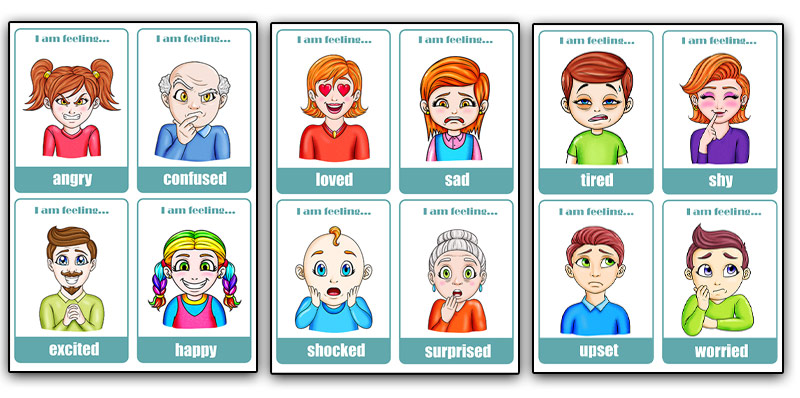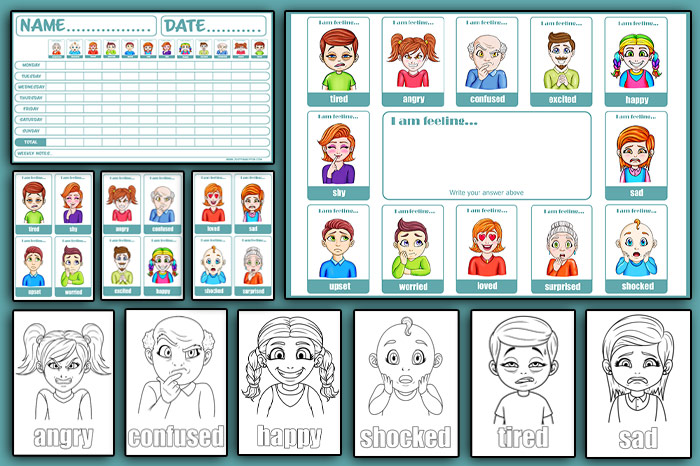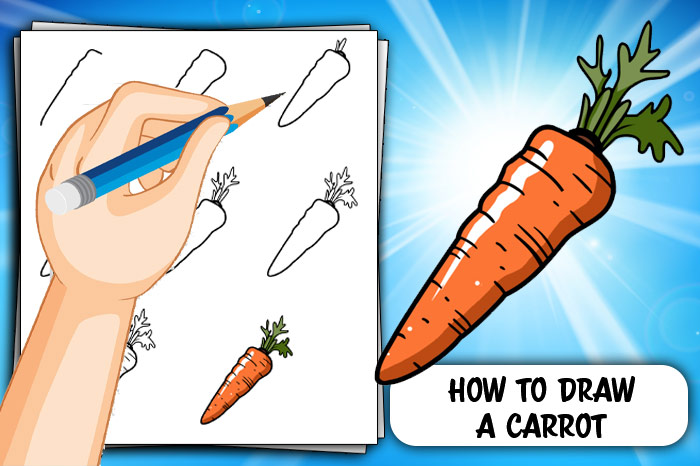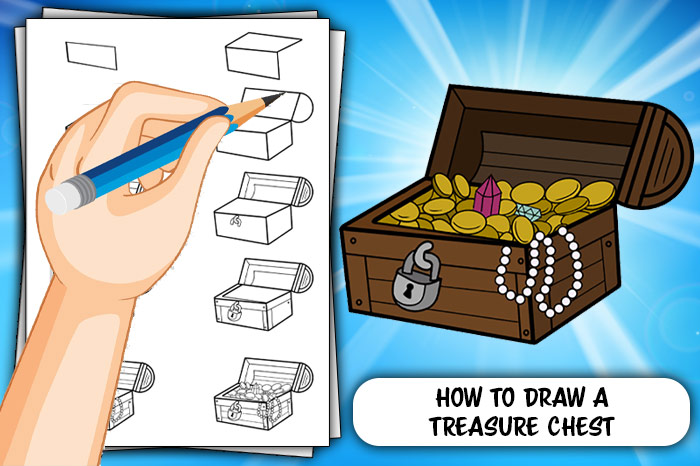Most people think that a chameleon changes colour to camouflage and hide from predators. This isn’t true. They are actually showing their emotions. Angry, relaxed, scared, they even have a colour to show that they’re poorly. If only children came with this useful feature! How many supermarket tantrums, dinner time meltdowns and play park wobblies could’ve been avoided if they could just tell us how they’re feeling before reaching boiling point?
Unfortunately, kids are born lacking, not only a chameleon-like warning system but also the words to name their big emotions. That’s why we’ve created a feelings chart for classroom & emotions flashcards. DOWNLOAD OUR EMOTIONS WORKSHEET PACK NOW and teach them to name and recognise these feelings, in themselves and others.
What’s included?
Feeling Chart For Classroom – Page 1
Our feelings chart is perfect for pre-schoolers or for use in the classroom. An important first step in developing a child’s emotional intelligence is learning to name these common emotions. If they can tell you how they’re feeling, you can teach them the right strategy to help them deal with it.

How to Use
Download our Feelings Chart For Classroom HERE
One to one – Talk through the emotions with your child. Can they name them? Can they think of a situation that might make them feel angry, happy or shocked?
Children learn best through play so get some toys out and act out some little scenarios. Can they point to the emotion their doll would feel when she gets a cuddle? How about the baby triceratops when a T-rex comes along? They will love to watch you creating funny and scary stories with their favourite toys.
At Home – Display the printable emotions chart where your child or children can reach it. Now if your child starts to feel an emotion they can show you, even if they can’t name it. They could point to it or write it in the centre.
Top Tip– Our sheet can be laminated and written on with a dry wipe marker again and again.
If you have more than one child they could each have a peg with their name on it or a different coloured pin and these can be moved around throughout the day. Stop a tantrum in its tracks by asking your child to show you their emotion. You might be surprised that they are actually feeling shy or tired. At the very least, they may be distracted by moving their peg!
In the Classroom – Print on a large sheet of A3 and display on the wall at child height. Now you have a great resource for children to tell you their emotions when they might feel too shy to say it.
Options
- Behaviour management – Invite children to point to the feelings chart if you notice a change in their behaviour. Are they feeling shy, worried or confused?
- Child-led – Write each child’s name on a peg and let them move their peg around the edge of the chart when they want to show you how they are feeling.
- Classroom entry – Have the children move their peg as they enter the classroom. Knowing a child has arrived angry or upset will allow you to do some early intervention to help them feel better.
Emotions Printable Diary – Page 2
Repetition is the key to learning success and our diary is a perfect way to make sure you revisit these new words for emotions every day. It might also be interesting to see how emotions change throughout the week. Is your child more tired towards Friday? Do they feel worried on a Sunday? Or, are they excited for Monday?!

How to Use
Download our Emotions Printable Diary HERE
At Home –
Create a tally for the emotions experienced each day. Each time your child has an emotion that they wish to record add a mark in the box below that emotion on the correct day’s row. They can make unlimited marks in a day. This might be just when they remember or you could set a few times in the day to ask how they are feeling. Maybe in the morning, afternoon and evening. Take care not to always ask just before a meal though as I know my daughter would answer the same way every time!
At the end of the week add up your tally marks and talk about it with your child. Which emotion did they feel the most? Is there a pattern? Is there anything that you can do to help?
In the Classroom –
- Print a sheet for each child in the room and allow them to keep it on their desk. It might be a good idea to tape it down for the week.
- They add a tally mark when they feel they’d like to or you could ask them to do it at set times throughout the day.
- At the end of the week ask them to add up their tally marks and make any notes at the bottom.
- Collect in all the sheets and have a look. What a great insight into your student’s feelings! Look for patterns, see who feels worried before lunch, maybe they are having friendship issues? Is someone confused before maths? Perhaps they just feel happy and loved in your classroom!
Emotion Cards – Pages 3 to 5
Once your child can name their own emotions, an important next step is being able to tell how other people are feeling. It’s an important skill to be able you use facial expressions and body language to read another person. Mastering this skill will help your little one play well with others and develop their empathy. Our printable feelings cards are a great resource to help them learn quickly.

How to Use
Download our printable emotion cards HERE
- Emotions flashcards – Show the cards and have your child name the emotion. Correct answers go in a pile on the right and incorrect in a pile on the left. Lots of praise and high-fives to celebrate their successes!
- Feeling cards memory game – Print two sets of our emotion cards, cut them out and lay them face down. Each player turns over two at a time. If they match, they get to keep them and pull the matching facial expression. The player with the most cards at the end wins!
- Small world emotions cards – Add emotions into their small world play by giving your child a set of our feelings cards. When they are playing with any of their small worlds like a farm, zoo, dollhouse, lego world or dinosaur land they can draw a card to give their figures emotions. Oh no, why are all the sheep angry? What is the doll excited about? Why is T-rex upset?
Feelings Faces Colouring Sheets – Pages 6 to 17
We have included a full-sized colouring sheet for each of our emotions. Having fun colouring their page will help a child to learn any tricky emotions. Completed sheets could also be displayed in the classroom as a great reminder of their big feelings vocabulary.

DOWNLOAD OUR FEELINGS CHART FOR CLASSROOM & EMOTIONS FLASHCARDS NOW
Did you love our emotions and feelings worksheets?
Track your child’s progress in using their feelings and emotion words with our Free Printable Reward Chart Template. Then reward their hard work with our Free Printable Certificates And Awards.
By Laura Davies



